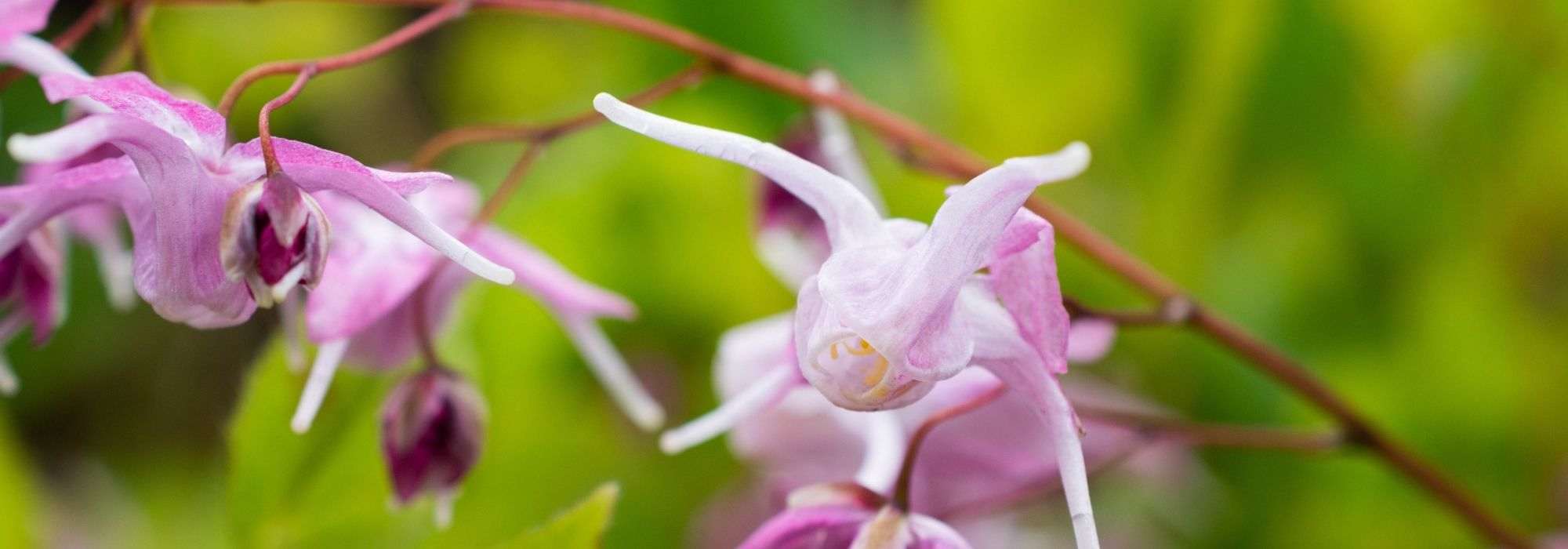
7 pink spikes
for an enchanting garden decor
Contents
Also known as the fairy flower or barrenwort, epimedium brightens up shady areas of the garden with its spur-like flowers worthy of a fairy tale. These are nodding above very decorative foliage that changes colour with the seasons. The genus Epimedium includes numerous species and varieties with pink flowering, in shades ranging from pale pink to red-pink, including violet-pink. Here you will find our favourite pink epimediums: deciduous, evergreen or semi-evergreen, with large flowers, more or less spreading, bicoloured or solid.
Epimedium hybrid 'Pink Elf'
The Epimedium ‘Pink Elf’ is a hybrid developed by Robin White that stands out for its contrasting bicoloured flowering. This highly floriferous variety of barrenwort produces numerous flowers with large sepals and light pink spurs from April to May, surrounding a cup of dark pink petals. This evergreen species has a bushy habit and does not exceed 30 cm in height and width at ripeness. Its young heart-shaped foliage develops in a bronze colour, turns green in summer, and takes on a stunning red-orange hue in autumn as temperatures drop. Uniquely original for the genus, pair this ‘Pink Elf’ fairy flower with spring bulbs such as snowdrop, muscari, Spanish bluebell, tulip, and Anemone blanda.

Epimedium ‘Pink Elf’
Epimedium grandiflorum 'Akebono'
Flowering in May, Epimedium grandiflorum ‘Akebono’ is a recent variety of Japanese origin, with “Akebono” meaning “dawn” or “daybreak.” This fairy flower displays a profusion of cluster flowers, coloured in pale lilac with a hint of pearly white. The broad, spurred petals are adorned with long sepals, giving the flowers a lovely elegance. This large-flowered epimedium produces deciduous foliage in purple and bronze tones in spring and autumn. The green leaves in summer retain a red margin around their edges. This charming and generous epimedium, about 25 cm tall, can spread its foliage up to 30 cm wide. Perfectly suited for a romantic garden setting, plant the fairy flower ‘Akebono’ in the shade to dress a border, alongside heucheras, hardy geraniums, creeping bugle, and Montia sibirica.

Epimedium grandiflorum ‘Akebono’ (photo Guido)
Discover other Epimedium - Barrenwort
View all →Available in 2 sizes
Available in 2 sizes
Available in 1 sizes
Available in 1 sizes
Available in 1 sizes
Available in 1 sizes
Available in 1 sizes
Available in 1 sizes
Available in 1 sizes
Available in 2 sizes
Epimedium grandiflorum
Epimedium grandiflorum may appear delicate, but in reality, it is a hardy, low-maintenance perennial. This Japanese species is the source of numerous cultivars. This fairy flower showcases a very aesthetic flowering from April to May. The shade of its pink flowers leans towards lilac. The long, white, curved spurs give these spring inflorescences, approximately 4 cm in size, the appearance of a large spider. The heart-shaped and dentate foliage emerges bronze in spring, turns a rich green, and finally surprises us with a beautiful caramel hue in autumn. Being a deciduous species, the vegetation of this epimedium disappears in winter. This rounded cushion-like perennial, about 30 cm in all directions, integrates easily into a cool, semi-shaded rockery alongside Polypodium vulgare, Acaena, gentian, Iberis, and moss phlox.
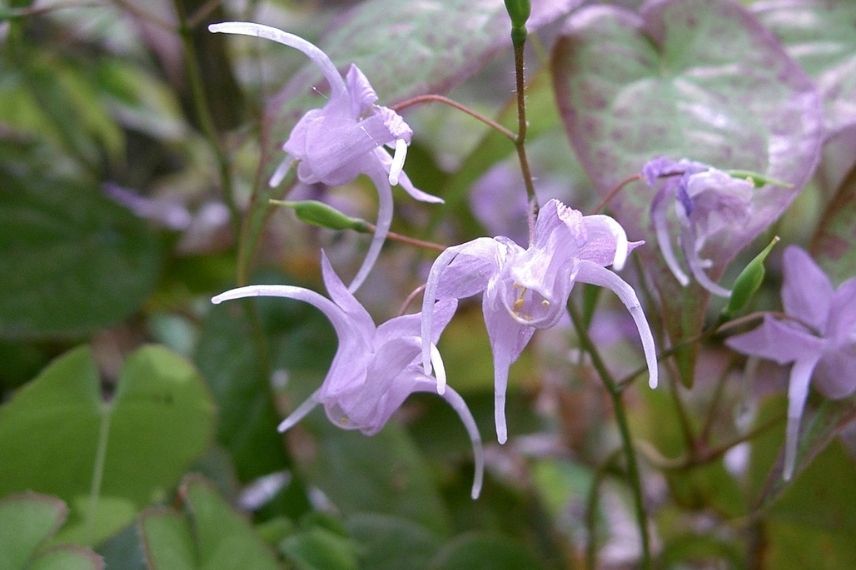
Epimedium grandiflorum (photo Kenpei)
Epimedium grandiflorum 'Red Beauty'
In May, Epimedium grandiflorum ‘Red Beauty’ offers an abundant and vibrant flowering display. Large flowers measuring 3 cm with long pale pink spurs bloom dressed in purplish pink. These delicate star-shaped inflorescences are gathered in clusters, inserted on flexible stems. They catch the eye with their brilliant colour! The young foliage is bronze-purple and turns dark green in summer. This deciduous species then turns red in autumn before disappearing for winter. Note that this hybrid is sometimes referred to as ‘Yubae’. A rhizomatous perennial forming a compact tuft of 30 cm in all directions, the ‘Red Beauty’ epimedium is reliable, tolerating drought well and not fearing root competition. Showcase the stunning flowering of ‘Red Beauty’ epimedium by scattering it in the heart of a flowering bed alongside companion, astrantia, Anemone nemorosa, hosta, foxglove, and canche.
Epimedium brachyrrhizum
Originating from China and discovered in 1994, Epimedium brachyrrhizum captivates us with its large star-shaped pink flowers, approximately 4-5 cm in diameter, featuring particularly long spurs. This species of barrenwort showcases elegant lavender-pink flowers from April to May, arching and perched on floral stems 40 cm tall. Its dense foliage develops in shades of pink or purple in spring, then turns green, darkening over the months to finish as olive green and brown. Although the growth of its short rootstocks is rather slow, this semi-evergreen elf flower makes a good groundcover over time, capable of spreading 30 cm wide and reaching a height of around twenty centimetres. Plant this groundcover barrenwort alongside winter aconite, lungwort, bleeding heart, or even toad lily.
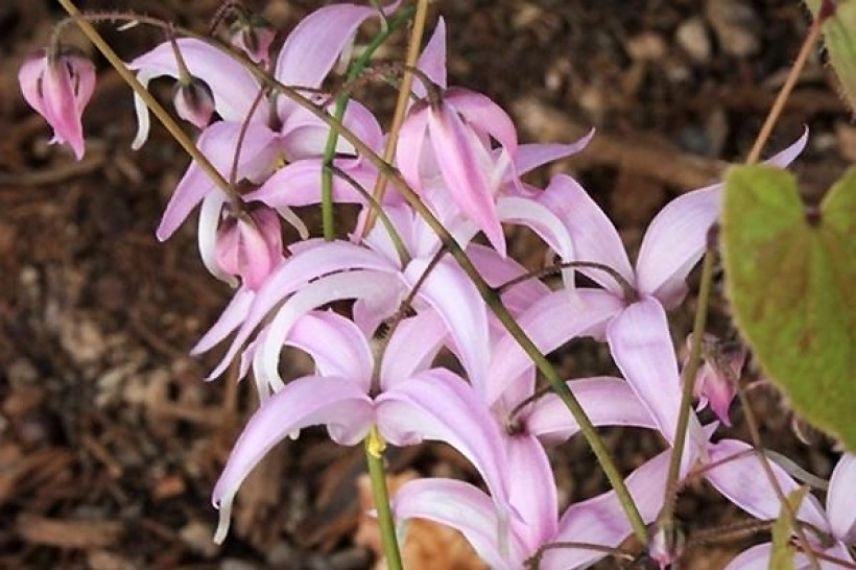
Epimedium brachyrrhizum
Epimedium youngianum 'Roseum'
Epimedium (x) youngianum ‘Roseum’ is a variety of deciduous epimedium. Valued for its floribundity, it produces numerous small violet-pink bell-shaped flowers in April-May, with or without spurs. As a hybrid epimedium, its flowers may not be identical. This elf flower ‘Roseum’ presents a clump of foliage measuring 25-30 cm in all directions, formed by very slightly dentate ovate leaflets that change colour. Young leaves are bronze in early spring, turning green throughout the summer season, and reverting to warm hues in autumn. Resulting from a cross-breeding between Epimedium diphyllum and Epimedium grandiflorum, the epimedium ‘Roseum’ is easy to grow in partial shade in consistently moist soil. Note that there is a white version of this epimedium: Epimedium youngianum ‘Niveum’. Pair the elf flower ‘Roseum’ with light woodland plants such as pratia, Chloranthus japonicus, Erythronium dens canis ‘Purple King’, and liriope, which take over by flowering in summer.
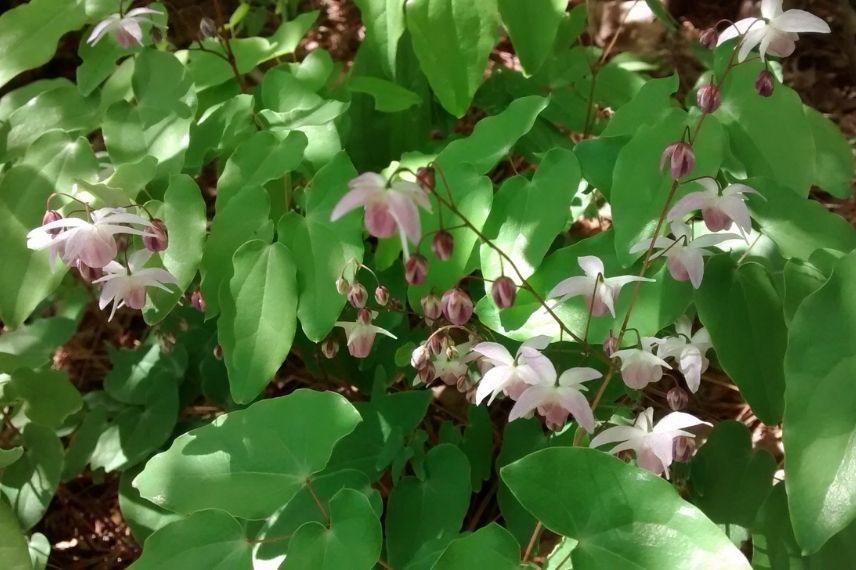
Epimedium (x) youngianum ‘Roseum’ (photo C. Haskell – Flickr)
Epimedium rubrum 'Galadriel'
The Epimedium rubrum ‘Galadriel’ produces larger and brighter flowers than the typical species. The bicoloured flowering occurs from April to May. The contrasting purple-pink and white flowers are then suspended above the foliage on fine, flexible flower stems. This recent variety, selected in Germany, also features more robust and colourful foliage than Epimedium rubrum. Its evergreen leaves, which change colour and are veined, transition from green-red in spring to green in summer, then to brown-red in autumn. This ‘Galadriel’ elf flower is named after the character Galadriel, a tall and beautiful elf from J.R.R. Tolkien’s novels ‘The Silmarillion’ and ‘The Lord of the Rings’. Forming a lovely carpet cushion 20 cm high and 30 cm wide, the red epimedium ‘Galadriel’ is ideal as a groundcover plant in the shade of trees or bushes, accompanied by aquilegias, Japanese fairy bell, and elegant capillary.

Epimedium rubrum ‘Galadriel’
For further reading
- Discover our association ideas for epimediums
- Everything you need to know about Epimedium, Flower of the Elves: how to plant, grow, and maintain
- For more options, feel free to check out our full range of flowers of the elves on our site
- Subscribe!
- Contents
































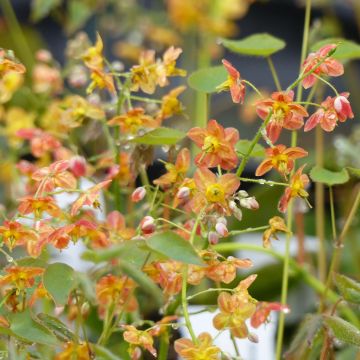
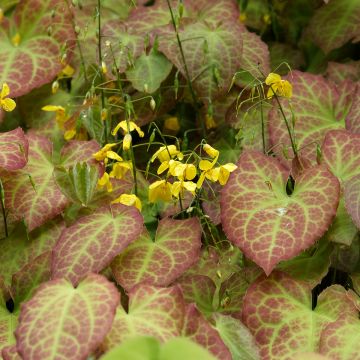
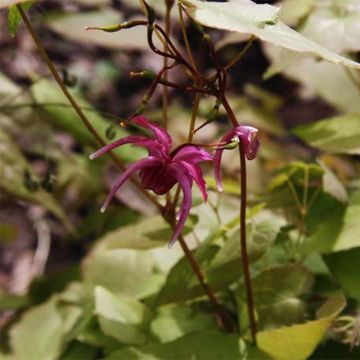
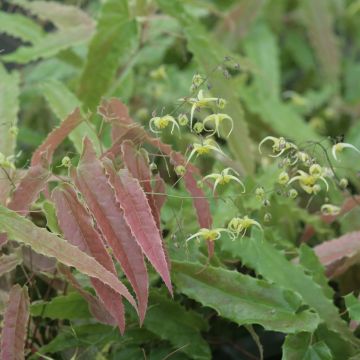
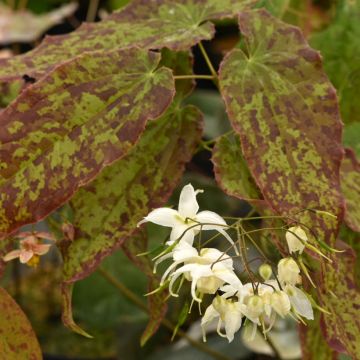

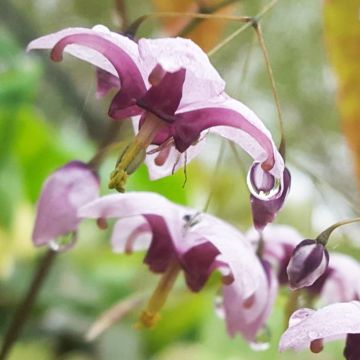
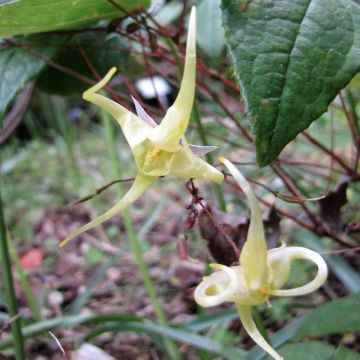
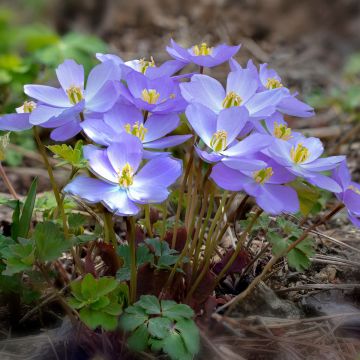
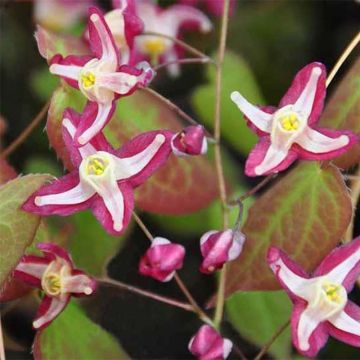
Comments